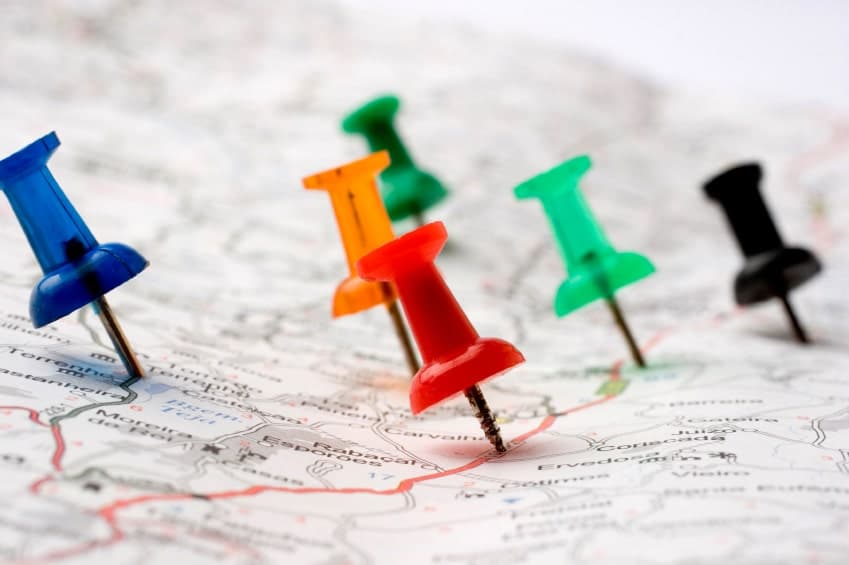In this Article...quick links
At SecondNature, it’s interesting how the questions we are being asked have changed over the last few months. The C-19 pandemic meant most of us spent a lot of time retraining ourselves to present effectively online. Although there were inevitable downsides to this, ‘Teams/Zoom fatigue’ being the primary one, it did offer us the opportunity to prepare and use copious amounts of notes when presenting, without them being visible to other people on the call.
However, as we shift back from virtual to face-to-face presenting, at least some of the time, the question many people are asking is ‘Is it OK to read from notes during a presentation?’.
We believe that whilst it’s fine to deliver a formal speech using notes, a business presentation should ideally be given without using them. If you need a few prompts to remember detailed statistics, quotes, or a list of people’s names, then that’s fine. Otherwise, it really is best to get used to presenting without them.
Why is it better to present without notes?
Can you imagine if you went to a concert and the lead singer had to read the words of the song from notes rather than look at the audience? Wouldn’t that really spoil your enjoyment?
When someone is constantly looking at their notes during a presentation it breaks up this important connection with the audience, creates a physical barrier, and can be also distracting for the audience, and even for themselves as the presenter. This is because each time they look down to check their notes, they will almost certainly have to re-find their place again. This can easily throw them off their stride, break their rhythm, make them lose concentration and hence lead to lots of umms and filler words, or awkward silences as they shuffle their papers trying to find where they are in their notes.
The first key piece of professional advice we give when we’re coaching business people on our presentation skills program is to focus on the audience when you’re preparing your presentation. What’s in it for them, why should they be there, and what do they want or need to hear? The same holds true when you’re delivering your presentation. The audience should be your focus. Eye contact (or as we call it, eye connection) is one of the most effective ways of letting your listeners know you are 100% focused on them. Eye connection is, as the term suggests, how we connect with the audience.
Reading from notes can also make you sound scripted and insincere. That’s because none of us speaks as we write. How we write is almost always more formal, using longer sentences and more elaborate vocabulary. Not only that but notes can seriously trip you up if someone interrupts and asks you a question during your presentation. How do you adjust your presentation after the question if, for example, your answer is going to cover the next paragraph/page of your presentation? You might think that memorising your notes is the answer. This is actually a bad idea. For a start, it’s very difficult to do. On top of that, even if you can memorise your script, you’ll almost certainly end up talking too fast, with little or no pauses. Compound that with extra-long sentences and overly elaborate vocabulary and your audience will really struggle to follow what you’re saying.
Another reason not to use notes is credibility. If you have to rely on notes to get through the presentation then you (and the audience!) have to ask, are you really the right person to be presenting? If you come across as not knowing your content you’ll be in danger of appearing unprepared and unprofessional.
If you are a fan of the Ted Talk series then you will have observed that none of the presenters uses notes. They take you on an engaging journey by delivering a compelling narrative that combines storytelling with pauses, movement, gestures, body language, facial expressions, impactful slides and sometimes, props. Embracing this type of presentation style is an important business skill that is really worth perfecting.
So, how do you present without notes?
It all starts with how your craft the presentation. The best presentations tell a story and take the audience on a memorable journey.
Telling a story is also the easiest way to remember what you are going to say. Think about some of your favourite stories, either something factual from your past or perhaps a fictional tale. You are able to recall and re-tell these stories over and over again with complete ease and confidence. You may use slightly different words each time but you follow the same structure and rarely miss anything. This in itself is a great lesson that teaches us that the precise words themselves are not the power behind the content, and they don’t really matter too much. Put another way, you don’t need to note every word down or memorise them. You can still make the same argument, or tell the same story, using different sets of words but still get over the message you want to. And you can do this because the key messages are embedded in your brain, and your muscle memory if you like. Giving a presentation should be no different.
Our 5 techniques to deliver presentations confidently
For some great tips on how to incorporate storytelling within business check out our strategic storytelling blog.
Below you’ll find our 5 suggested techniques to help you deliver presentations confidently without notes.
-
Write your own story.
As with all presentations, before you start to craft your narrative you should know where you want to end up at the close of your presentation, and why. This objective is what we call the Destination. The Destination should be a single sentence that combines the reaction you want from your audience by the end of the presentation and why they should have this reaction. This Destination will act as the focal point for the whole of your presentation. Or, if you like, the punchline of the story. This in turn will make the story easier to remember, for you and for the audience.
Once you have a focussed Destination, you should chunk your story into 3-5 chapters. Now give each chapter a punchy heading. These chapters will form your Roadmap. The Roadmap provides the path that will help take you, and your audience, to your Destination.
Next, decide on the ONE Memorable Message or takeaway that you want your audience to remember from each chapter of your story. These Memorable Messages will provide the thread that holds the story together. In fact, it could be argued that these are the most crucial elements of your story.
Finally, work out the detail of your story. This is the body of your presentation. Don’t go overboard by including too much content though. Instead, carefully select information that you know will help to support your overall objective and which will be meaningful and motivating for the audience. Remember, more often than not, less is more! And of course, the less you have, the less you’ll need to remember!
Crafting a focused presentation that tells a clear story is the first step to helping you present without notes. But how you visualise your story is also key.
-
Let your slideware do some of the heavy lifting.
Now you know the story you want to share, the trick is to create your slides in such a way that they also remove the need for any notes. And, no, that doesn’t mean transferring your notes onto slides!
Instead, we always advise that presenters create their slides so that they help tell and reinforce the story in a logical, easy-to-follow way – for the audience and for the presenter. Within the slides use as many images and graphics as you can as they are more impactful than words. And of course, a meaningful visual will act as a trigger, reminding you what you want to say.
If you are using bullet points on slides, remember the 5 x 5 rule of thumb i.e. ideally no more than five bullet points per slide and ideally no more than five words per bullet point. If you follow this guideline the audience won’t read ahead and overtake you. This is simply because there isn’t anything for them to actually ‘read’. Make sure these words provide you with enough information, though, for you to confidently talk about the points you want to make.
We don’t need to tell you not to read from your slides. Instead, practise slide surfing. Using this technique will help you come across as comfortable, knowledgeable, prepared and credible.
-
Memorise what matters.
You’ll already know that the start is the most important part of any presentation. As they say ‘You never get a 2nd chance to make a great 1st impression’.
You’ll also probably agree with me when I say the start of a presentation can be the most nerve-wracking. So work out exactly how you want to start your presentation – the opening 2-3 sentences. This may, or may not, include an Attention Grab. Now, practise saying these sentences, using your normal speaking voice until these 2-3 sentences are fully embedded in your mind.
Having a strong close is as important as having a strong start. So again, practise delivering your final Destination sentence until you know you’ll be able to land this message with absolute confidence and conviction.
Rehearsing the start and the close will not only increase your credibility at the most important times in your presentation, but it will dramatically improve your confidence and so help reduce any negative nerves you may feel on the day.
-
Boil it down.
So you now have a focused story, clear slides, and a strong start and close. But you’re still probably worrying about how on earth you’re going to remember everything you want to say during the presentation. The reality is that you never will. Unless you’re somebody like a trained Hollywood actor.
The secret is to boil each chapter of your story down to just 3-5 trigger words. No more than that otherwise you won’t remember them. The trigger words should complement your slides and help you to recall the structure and narrative of your story.
Write these trigger words down.
Now assign each of these trigger words to a different finger, on one hand. When you practise (and practise out loud), hold the relevant finger with your other hand. Over time the action of holding a particular finger will be associated in your brain with the appropriate trigger word i.e. it will become embedded in your muscle memory. And the trigger words will help you knit the story together.
To learn more about persuasive language and power words, read up on our blog about 25 words that can make your pitch compelling and emphasise your critical selling messages.
You can also use movement and physical places in the room in the same way. In other words. certain words become associated with particular spaces. Using the Attention Triangle is a great way to achieve this.
-
Practise – out loud.
We can’t emphasise enough how practising is the best way to become completely comfortable presenting without notes, so practise, practise, practise!
Ok, so we get that you may not have time to practise, practise and then practise some more. And the good news is that everything we’ve shared so far will actually reduce the need to overly practise. But it’s still important if you really want to nail presenting without notes. When you practise, record yourself on your phone. Or do it in front of a mirror, or with colleagues, friends, or family. When you practise your presentation make sure you use your slides and stand, move and gesture in the same way you will on the day.
Definitely don’t use a tight script, and don’t try to memorise every word. Instead, remember to think of your presentation as a story and deliver it as if it is a conversation. We guarantee this will help you come across as more confident, relaxed – and engaging too.
There are many benefits to learning how to deliver a compelling presentation without notes. You appear more knowledgeable and credible, which helps you build a strong rapport with your audience and gain trust. Your voice will sound natural rather than scripted and once you get used to it you’ll wonder why you ever thought it was a good idea to use notes in the first place!
Tailored and personalised presentation skills training
If you need to build your team’s presentation skills through personalised training or coaching that is tailored to your business, we can help.
For nearly 20 years we have been the Business Presentation Skills Experts, training & coaching thousands of people in an A-Z of global blue-chip organisations – check out what they say about our programs.
To find out more, click on one of the buttons below:

Belinda is the Co-Founder and Managing Director of SecondNature International. With a determination to drive a paradigm shift in the delivery of presentation skills training both In-Person and Online, she is a strong advocate of a more personal and sustainable presentation skills training methodology.
Belinda believes that people don’t have to change who they are to be the presenter they want to be. So she developed a coaching approach that harnesses people’s unique personality to build their own authentic presentation style and personal brand.
She has helped to transform the presentation skills of people around the world in an A-Z of organisations including Amazon, BBC, Brother, BT, CocaCola, DHL, EE, ESRI, IpsosMORI, Heineken, MARS Inc., Moody’s, Moonpig, Nationwide, Pfizer, Publicis Groupe, Roche, Savills, Triumph and Walmart – to name just a few.





